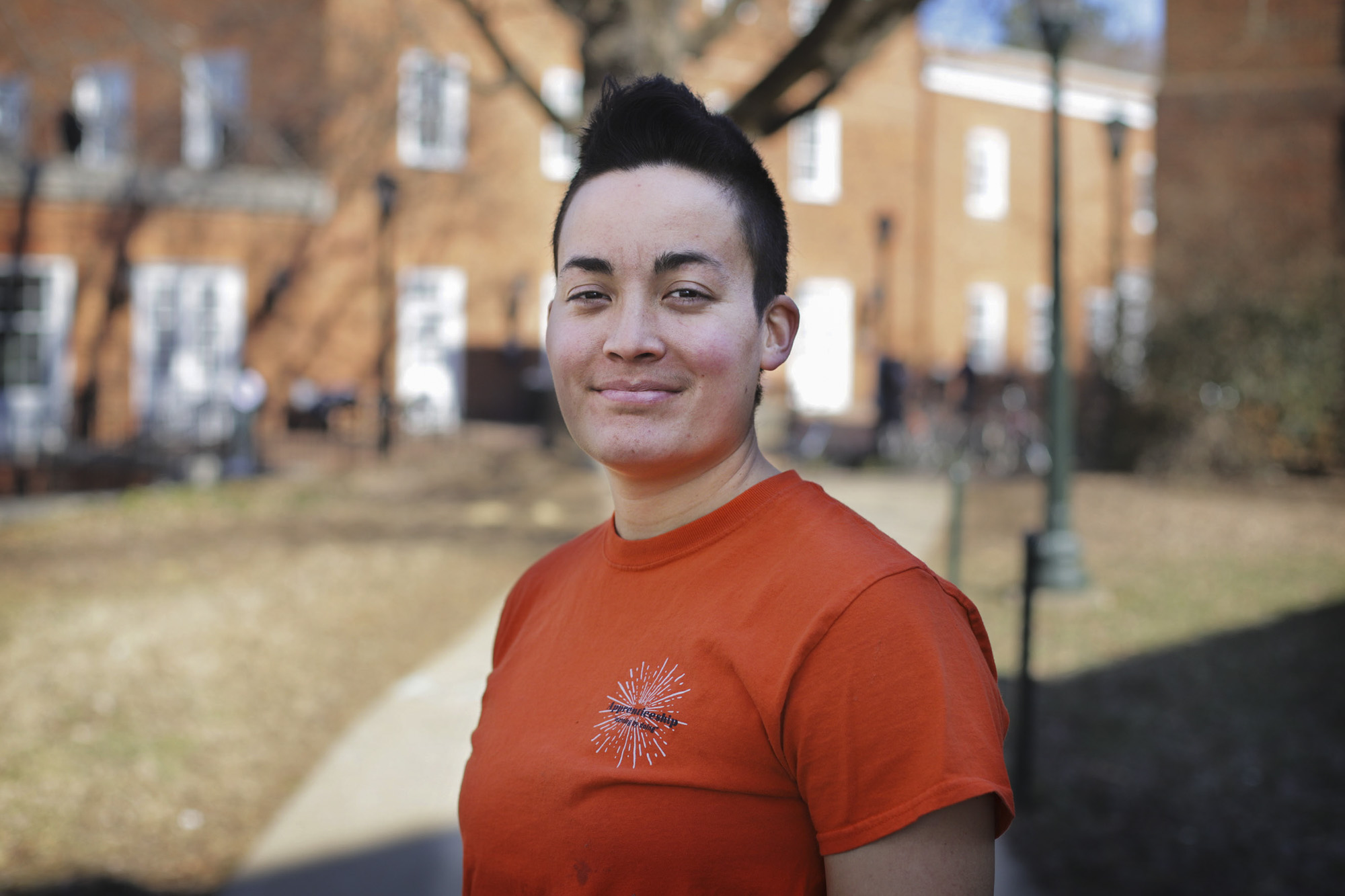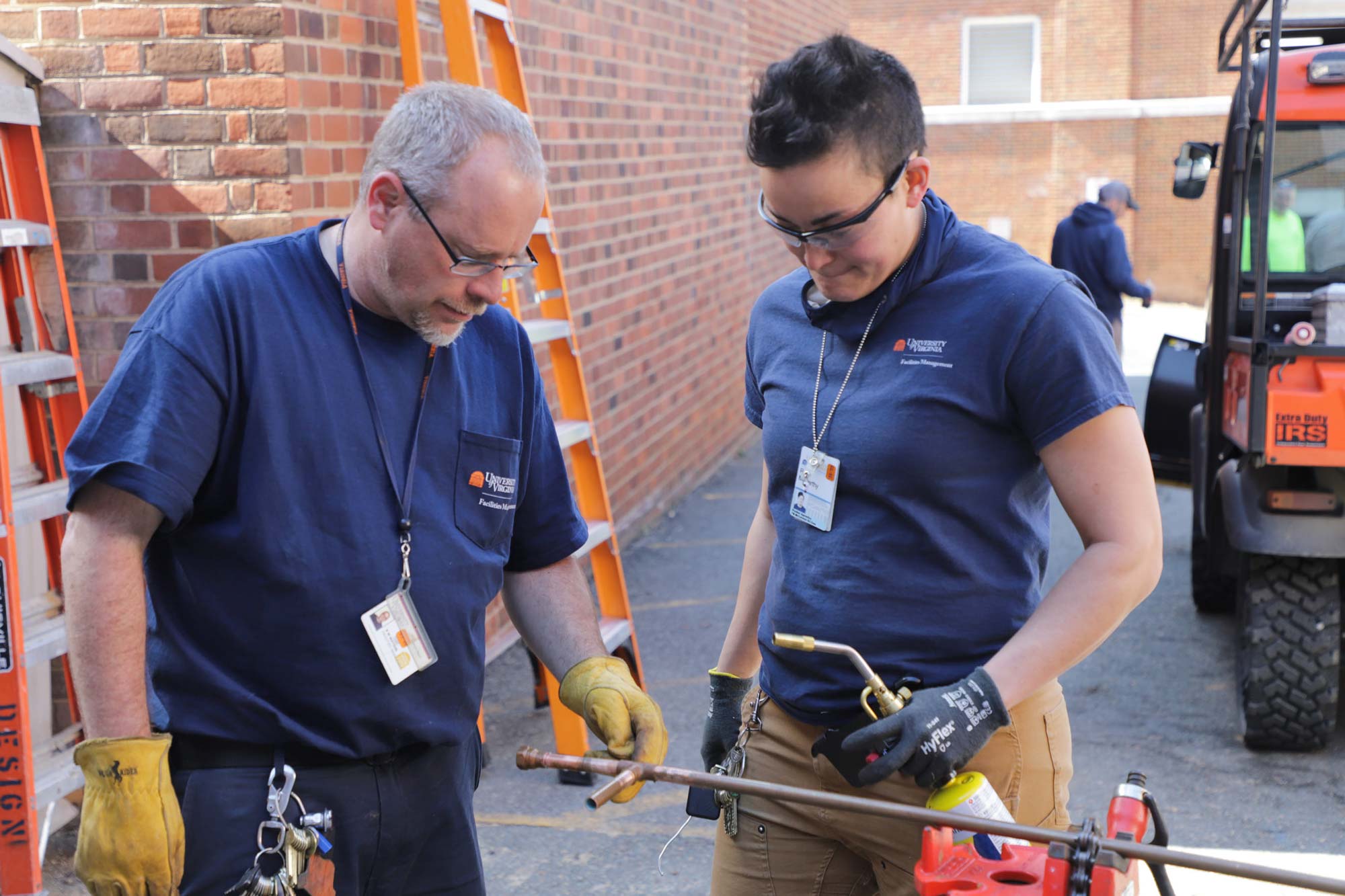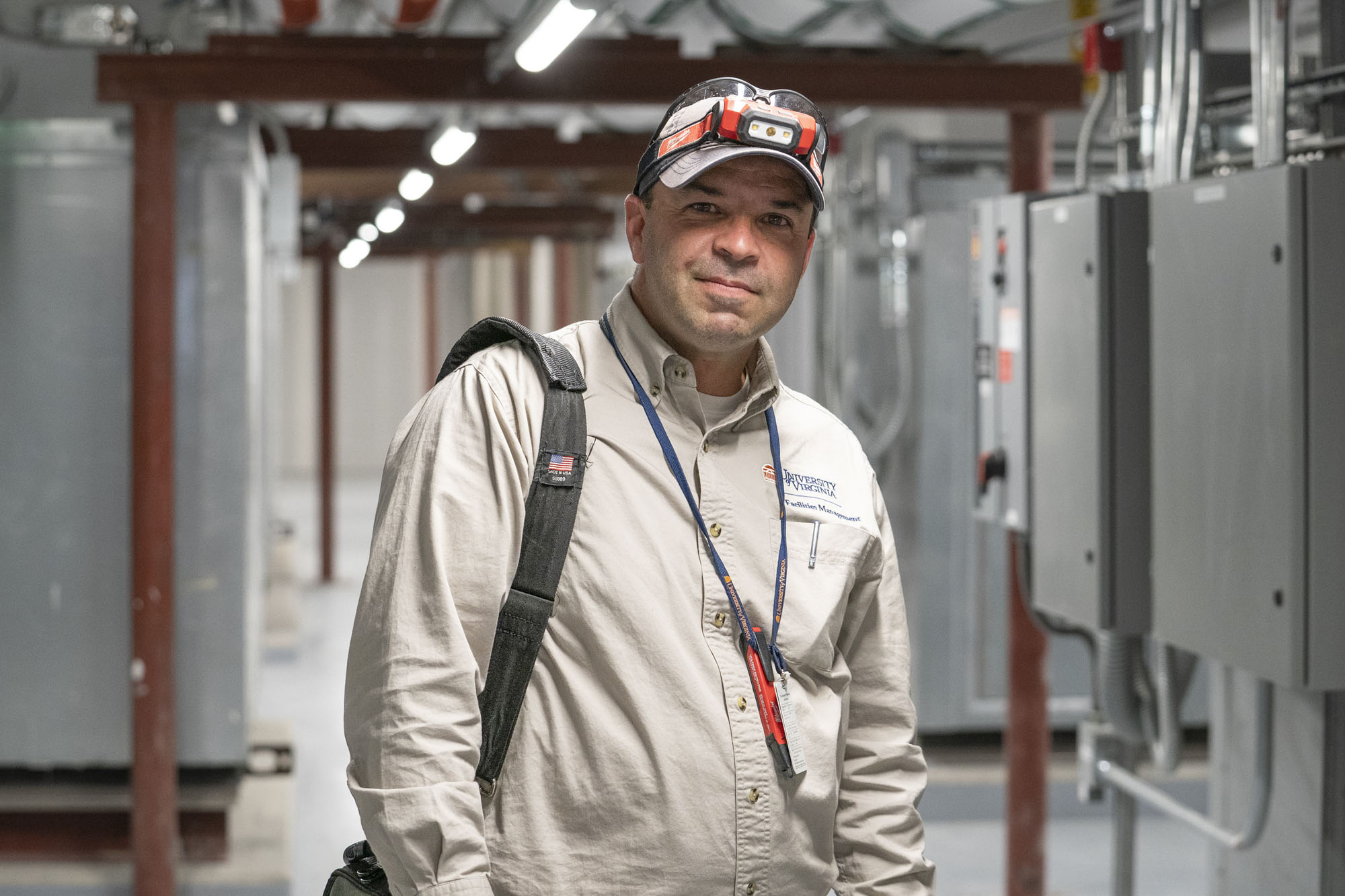At a job fair at the University of Virginia’s Alumni Hall on April 12, the ballroom was filled with Facilities Management workers, craftspeople, managers and local contractors, as well as people looking not just for work, but for careers. Part of the throng were apprentices, already on their career path.
UVA’s apprenticeship program is one pathway for those careers, developing skilled craftspeople in trades such as plumbing, electrical, heating/ventilation/air conditioning, carpentry and masonry. At the job fair, their clothing was color-coded – current apprentices in orange shirts, their instructors wearing blue – with both groups talking to prospective candidates.
Those hired into the apprenticeship program become University employees, receive classroom training and do hands-on work. Previously, candidates selected a trade in which they wanted to work, then spent the four-year program training for it; now, candidates get two years of general training before they select a specialty to focus on for the second two years.
“We worked with the Department of Labor and Industry, our apprentice instructors and on-the-job trainers to see ‘How can we adjust this?’” said Laura Duckworth, director of occupational programs at Facilities Management. “Now we have what we call our ‘2+2 model. For the first two years, they get a general education – two years do a little of each of the trades. They get a taste of the licensed trades, HVAC, electrical and plumbing, and they get a taste of carpentry, masonry and plastering. And they also get some historic masonry in there as well.”

Ryan McCarthy had been a personal trainer and coach in New York City before deciding to become a plumber. (Photo by Jane Centofante, UVA Facilities Management)
The redesign of the program also includes bringing the classroom work, which had been conducted by local technical education centers , in-house.
“We use the National Center for Construction Education and Research curriculum, an internationally accepted instruction for the trades,” Duckworth said. “For each module they complete, there is a proficiency test, an on-screen test and then a hands-on test scored by our instructors. The instructors themselves have to go through training in the NCCER curriculum to be qualified to teach.”
The program offers opportunities for both high school graduates entering the workforce and adult career-changers.
Ryan McCarthy, in her third year as a plumbing apprentice, had been a personal trainer and coach in New York City before deciding to become a plumber.
“There are people who make a lot of money in training, but they hustle and they own gyms and do a lot of things I was not interested in pursuing,” McCarthy said. “I could work with my hands. The trades are physical and engaging, and I knew I could take it as far as I wanted to, so I was lucky when I found the apprentice program at UVA.”












